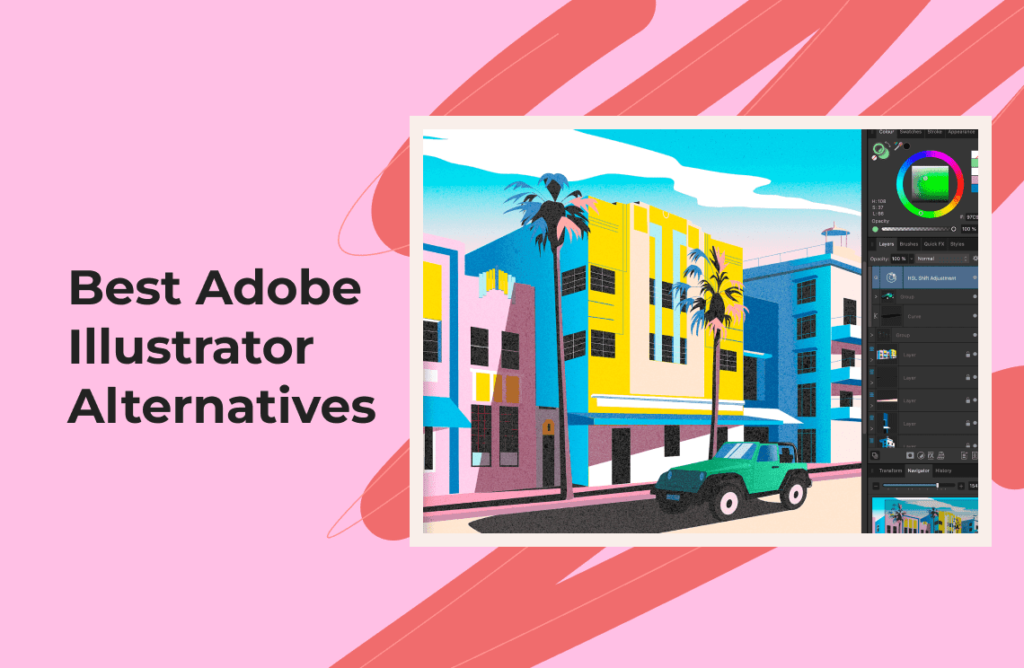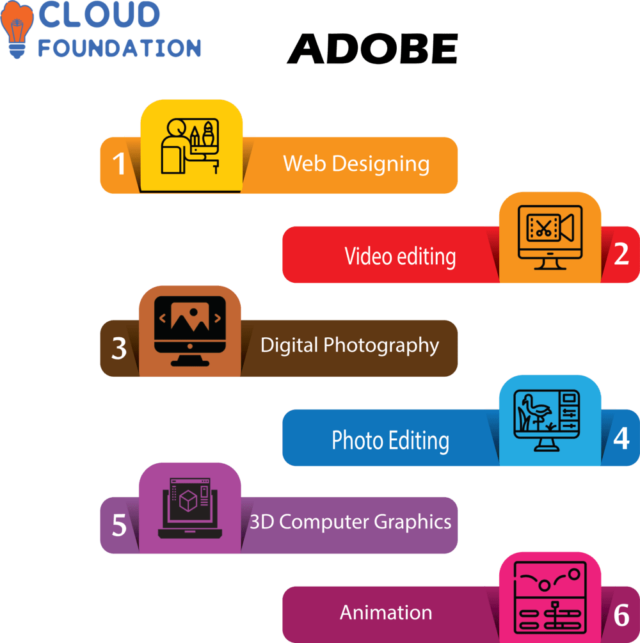Adobe is a renowned American multinational computer software company headquartered in San Jose, California. Founded in December 1982 by John Warnock and Charles Geschke, the company has revolutionized the software industry, particularly in the areas of multimedia and creativity software products. Its flagship products, such as Photoshop, Illustrator, and Acrobat Reader, have become household names.
What is Adobe?
Adobe Systems Incorporated is a company that specializes in creating software for a variety of content creation and digital media purposes. It is best known for its Adobe Creative Cloud, a subscription service that gives users access to a suite of software for graphic design, video editing, web development, photography, and more. Notable products within this suite include:
- Adobe Photoshop: Primarily used for photo editing and manipulation.
- Adobe Illustrator: A vector graphics editor.
- Adobe Premiere Pro: A timeline-based video editing software.
- Adobe After Effects: Used for visual effects and motion graphics.
- Adobe InDesign: Desktop publishing software for creating posters, flyers, brochures, magazines, newspapers, and books.
- Adobe Acrobat: Used for creating, viewing, and editing PDF files.
How to Use Adobe
The process of using Adobe software involves several steps, from installation to mastering the tools:
- Installation: Adobe software is available for download through the Adobe Creative Cloud website. A subscription plan must be chosen, which varies in price and features. Once the plan is selected, the software can be downloaded and installed on a compatible device.
- Learning the Interface: Each Adobe application has a unique interface designed to cater to its specific functions. Tutorials and user guides provided by Adobe are useful in understanding the basic layout and functions.
- Utilizing Tools and Features: Tools and features vary across different Adobe applications. For instance, in Photoshop, tools for cropping, resizing, and applying filters are essential. In Premiere Pro, tools for cutting, trimming, and adding transitions are critical. Tutorials, both official and third-party, can be followed to become proficient in these tools.
- Saving and Exporting: Once a project is completed, it needs to be saved and exported in the desired format. Each Adobe application offers various export options, ensuring compatibility with different media platforms.
Pros of Adobe
Several advantages are associated with using Adobe software:
- Comprehensive Toolset: Adobe applications provide a wide array of tools and features, allowing for extensive creativity and flexibility. This makes it possible to produce professional-grade work across different media formats.
- Industry Standard: Adobe software, particularly Photoshop, Illustrator, and Premiere Pro, is considered the industry standard. Professionals in graphic design, video production, and digital marketing often rely on Adobe products, making skills in these applications highly marketable.
- Continuous Updates and Support: Adobe Creative Cloud subscribers benefit from regular updates that introduce new features and improvements. Additionally, customer support is readily available, and a vast community of users can offer assistance.
- Cross-Platform Integration: Adobe applications are designed to work seamlessly together. Projects can be started in one application and finished in another, enhancing productivity and workflow.
- Extensive Learning Resources: Adobe provides comprehensive tutorials, forums, and resources for users of all levels. This support facilitates learning and helps users maximize the potential of the software.
Cons of Adobe
Despite its many advantages, Adobe software also has some drawbacks:
- Cost: Adobe Creative Cloud is subscription-based, which can be expensive over time, especially for individuals and small businesses. While Adobe offers different plans, the cost can still be prohibitive for some users.
- Complexity: Adobe applications are powerful but can be complex to learn. The steep learning curve may deter beginners or those who need to produce work quickly without extensive training.
- System Requirements: Adobe software requires a substantial amount of computer resources. High-performance hardware is often necessary to run applications smoothly, which can be an additional expense.
- Subscription Model: The move to a subscription-based model means that users must continually pay to maintain access to the software. This ongoing cost can be a disadvantage compared to software that can be purchased outright.
- Overwhelming Updates: Frequent updates can sometimes introduce bugs or change the interface, disrupting users’ workflow and requiring them to relearn certain features.
Log on Adobe Top 10 Illustrator Alternatives

Adobe Illustrator, widely recognized as a premier vector graphics software, has long dominated the market. However, alternatives have emerged over the years, providing comparable functionality and diverse features to meet various design needs. The following is a log detailing the top ten alternatives to Adobe Illustrator, which have been evaluated based on their features, user interfaces, and suitability for different design tasks.
- CorelDRAW
CorelDRAW, known for its robust vector illustration tools, is often considered a strong competitor to Adobe Illustrator. It is favored for its intuitive interface and powerful design capabilities. Complex illustrations, layouts, and typography projects can be efficiently handled using this software. Additionally, a variety of file formats are supported, making it a versatile choice for designers.
- Inkscape
Inkscape, an open-source vector graphics editor, offers a free alternative to Adobe Illustrator. It is praised for its extensive feature set, which includes tools for object creation and manipulation, node editing, and path operations. Inkscape’s community-driven development ensures continuous updates and improvements, making it a reliable option for budget-conscious designers.
- Affinity Designer
Affinity Designer, developed by Serif, has been acclaimed for its speed and precision. Its user-friendly interface and affordability have made it popular among both beginners and professionals. The software provides a seamless experience with features such as real-time blending modes, vector and raster design capabilities, and an extensive library of assets.
- Sketch
Sketch, primarily used for web and mobile interface design, has gained significant traction among UI/UX designers. Its focus on simplicity and efficiency makes it an attractive option. Features such as symbols, shared styles, and a robust plugin ecosystem enhance productivity and streamline the design process. Compatibility with other design tools is also a notable advantage.
- Gravit Designer
Gravit Designer offers a versatile and accessible design solution, available as both a web-based application and a desktop version. Its clean interface and comprehensive toolset cater to various design needs, from vector illustration to UI design. The software’s cloud integration allows for easy access and collaboration across devices.
- Vectr
Vectr, another web-based vector graphics editor, emphasizes simplicity and ease of use. While it may not offer the extensive features of more advanced software, it provides essential tools for creating basic vector graphics and illustrations. Vectr’s real-time collaboration feature enables multiple users to work on the same project simultaneously, making it suitable for team projects.
- Boxy SVG
Boxy SVG, a lightweight and user-friendly vector graphics editor, is designed for creating and editing SVG files. Its focus on simplicity and performance makes it an excellent choice for web designers and developers. The software supports various file formats and includes features such as path editing, text tools, and export options, ensuring a smooth design experience.
- Figma
Figma, a collaborative interface design tool, has gained widespread popularity for its real-time collaboration capabilities. It allows multiple users to work on the same project simultaneously, making it ideal for team-based design projects. Figma’s vector editing tools, prototyping features, and extensive plugin ecosystem have made it a favorite among UI/UX designers.
- Canva
Canva, known for its user-friendly drag-and-drop interface, offers a wide range of design templates and assets. While it is primarily used for graphic design projects, such as social media graphics and presentations, its vector editing capabilities should not be overlooked. Canva’s accessibility and ease of use make it a popular choice for non-designers and beginners.
- Krita
Krita, primarily recognized as a digital painting software, also provides robust vector editing tools. It is highly regarded for its customizable interface, extensive brush library, and support for various file formats. While Krita is often used by illustrators and digital artists, its vector capabilities make it a viable alternative for certain design tasks.
Evaluation Criteria
The alternatives to Adobe Illustrator have been evaluated based on several key criteria:
- Feature Set: The range and depth of tools available for vector illustration, including path editing, shape creation, and text tools.
- User Interface: The intuitiveness and ease of navigation within the software, which impacts the overall user experience.
- Performance: The software’s responsiveness and ability to handle complex designs without lagging or crashing.
- Compatibility: The ability to import and export various file formats, ensuring seamless integration with other design tools.
- Affordability: The cost of the software, including subscri
Conclusion
Adobe has established itself as a leader in the creative software industry, providing powerful tools that are used by professionals worldwide. Its products offer comprehensive solutions for graphic design, video editing, web development, and more. While the cost and complexity of Adobe software can be seen as drawbacks, the benefits of its extensive toolset, industry standard status, and continuous support often outweigh these disadvantages. By mastering Adobe software, users can significantly enhance their creative capabilities and professional opportunities.










